Physical Address
304 North Cardinal St.
Dorchester Center, MA 02124
Physical Address
304 North Cardinal St.
Dorchester Center, MA 02124
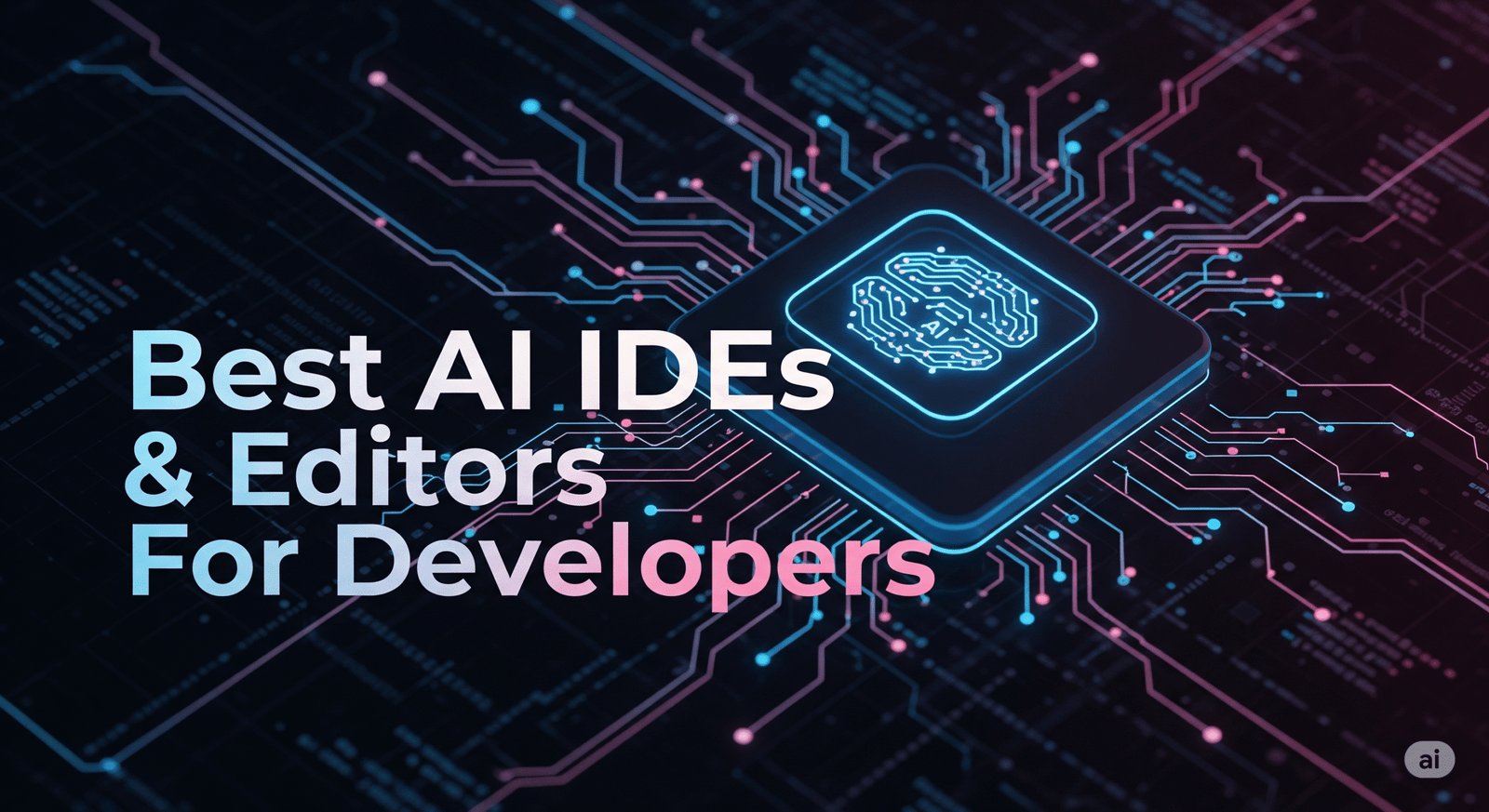
Remember when syntax highlighting felt revolutionary? Or when IntelliSense first started predicting what we wanted to type next? Those days feel quaint now. As developers in 2025, we’re witnessing the most dramatic shift in our toolchain since the invention of the IDE itself.
Your new pair programmer doesn’t take coffee breaks, never gets tired during late-night debugging sessions, and can write entire features from a single comment. AI coding assistants have evolved from simple autocomplete tools into sophisticated collaborators that understand your entire codebase, generate comprehensive test suites, and even fix their own bugs autonomously.
But here’s the challenge: with new AI coding tools launching every week, each promising to make you “10x more productive,” how do you cut through the marketing hype to find tools that actually deliver? As someone who’s spent countless hours testing these platforms in real development environments, I’m here to save you that time.
This isn’t another surface-level comparison filled with marketing screenshots. We’re diving deep into the five AI-powered IDEs and editors that are genuinely transforming how we build software in 2025. We’ll examine their real-world performance, critical privacy implications, and most importantly, which tool is right for your specific development workflow.
The AI coding tool market has matured into distinct categories, each optimized for different developer profiles and organizational needs. Your choice depends as much on your security requirements and tech stack as it does on raw AI capabilities.
Here’s our comparison framework:
| Tool | Best For | Standout Feature | Monthly Cost | Privacy Model |
|---|---|---|---|---|
| VS Code + GitHub Copilot | Full-stack developers, students | Agent Mode for autonomous multi-file tasks | $10 | Private code not used for public training |
| JetBrains + AI Assistant | Enterprise teams, typed languages | Deep IDE integration, local model support | ~$16 | Supports offline/local models |
| Cursor | AI power users, rapid prototypers | Codebase-aware chat with custom rules | $20 | SOC 2 certified Privacy Mode |
| Amazon Q Developer | AWS developers, cloud engineers | Unmatched AWS ecosystem knowledge | $19 | Pro content not used for training |
| Tabnine | Security-conscious enterprises | On-premises deployment, custom models | $39 (Enterprise) | Zero data retention, air-gapped options |
Let’s dive deep into each platform.
The Verdict: Best for versatile developers who want cutting-edge AI in their favorite editor
Visual Studio Code’s popularity isn’t accidental—it’s fast, free, and infinitely customizable. GitHub Copilot, powered by OpenAI’s latest models, including GPT-4o, has become the gold standard for AI assistance. Together, they form the most accessible entry point into AI-driven development.
Agent Mode: This is where Copilot truly shines. Assign it a GitHub issue, and it autonomously plans, codes, tests, and submits pull requests. I’ve watched it successfully implement OAuth integration from a simple feature request, creating multiple files and handling edge cases I hadn’t even considered.
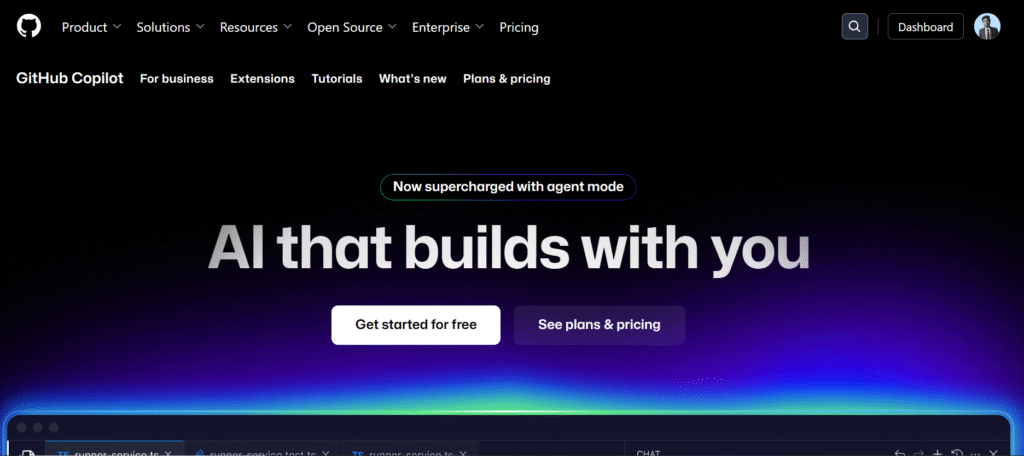
Contextual Chat: The integrated chat understands your entire workspace. Highlight a confusing function and ask “What does this do?” or “How can I optimize this?” The responses aren’t just accurate—they’re contextually aware of your project’s architecture and dependencies.
Predictive Editing: Beyond autocomplete, Copilot suggests logical next steps across files. After you modify a function signature, it proactively suggests updating all the call sites to maintain consistency.
Extension Ecosystem: The Copilot Extensions marketplace is a game-changer. Integrate Docker, Azure, or other services directly into your AI chat. Ask “@docker how do I add a new service to my compose file?” and get immediate, actionable answers.
Perfect for individual developers, students (who get Pro plans free), and polyglot programmers who work across multiple languages and frameworks. If you’re not locked into a specific IDE ecosystem, this combination offers unmatched flexibility.
In my testing, Copilot excels at:
The Agent Mode successfully completed 70-80% of medium-complexity tasks without intervention, though it occasionally needs guidance on architectural decisions.
Bottom Line: The most accessible path to world-class AI assistance, offering exceptional value for money and unmatched language support.
The Verdict: Best for professional teams working with strongly-typed languages who demand deep IDE integration
JetBrains IDEs have earned their reputation through decades of building the most sophisticated code analysis engines available. The AI Assistant leverages this foundation to deliver contextual awareness that’s hard to match elsewhere.
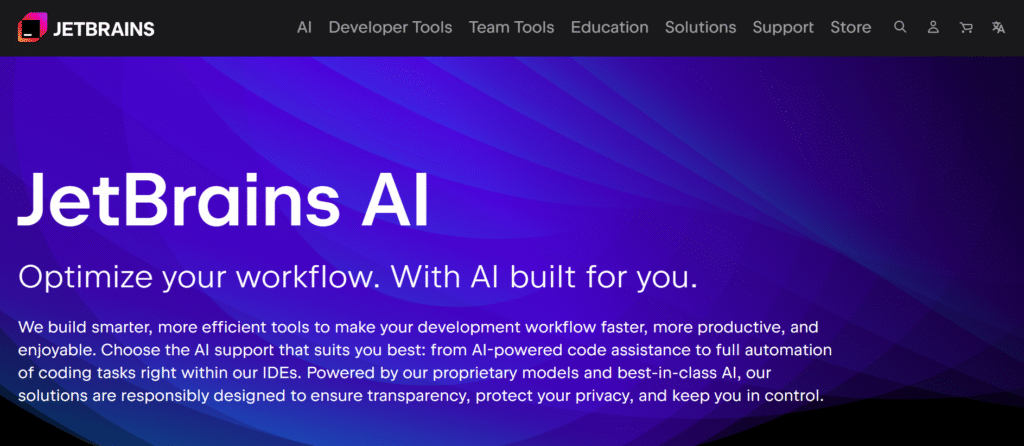
Deep Code Understanding: Unlike text-based AI tools, JetBrains AI Assistant understands your code’s semantic structure through the IDE’s analysis engine. This results in remarkably accurate refactoring suggestions and context-aware code generation, especially in Java, Kotlin, and C#.
Local Model Support: A crucial differentiator for security-conscious teams. Connect to local models via Ollama or LM Studio for completely offline AI assistance. Your code never leaves your network.
Integrated Workflow Intelligence: The AI is woven throughout the development lifecycle. It generates intelligent commit messages by analyzing your changes, helps resolve complex merge conflicts, and explains runtime errors by correlating stack traces with your codebase.
Multi-File Refactoring: Using Retrieval-Augmented Generation, the AI finds relevant context across your entire project to execute consistent changes across multiple files—essential for large-scale refactoring.
Enterprise development teams, particularly those working with Java, Kotlin, C#, or Python in complex codebases. If you’re already invested in JetBrains tooling and value reliability over bleeding-edge features, this is your best bet.
JetBrains AI Assistant excels at:
The local model support is particularly valuable—I’ve run Claude or Llama models locally with near-identical performance to cloud versions, ensuring complete code privacy.
Bottom Line: The most sophisticated AI-enhanced IDE experience available, worth the premium for teams that prioritize reliability and deep code intelligence.
The Verdict: Best for developers who want to push the boundaries of AI-human collaboration
Cursor took a bold approach: instead of adding AI to an existing editor, they forked VS Code and rebuilt it to be “AI-first.” This architectural decision enables AI interactions that feel native rather than bolted-on.
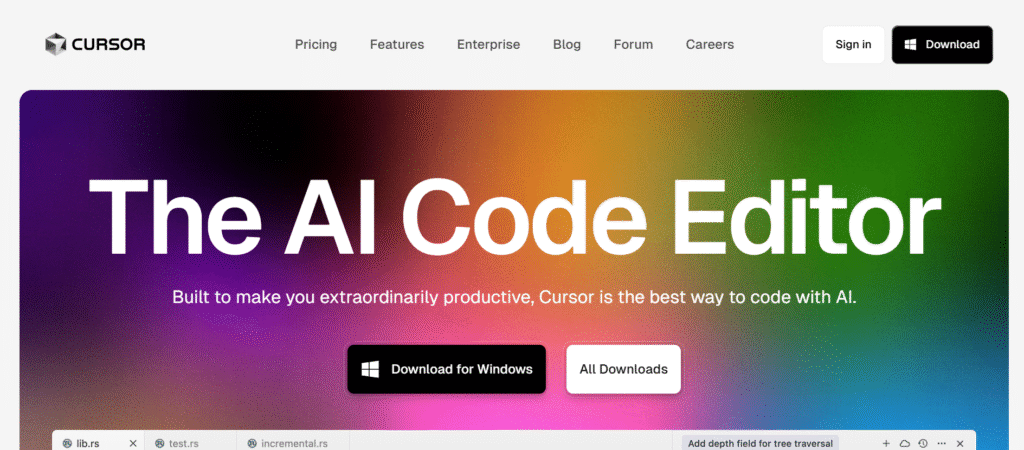
Codebase-Aware Chat: The chat interface is Cursor’s crown jewel. Use @ symbols to reference specific files, directories, or even documentation URLs. This granular context control produces remarkably relevant and accurate responses.
Agentic Workflows: Hand Cursor a high-level task like “implement JWT authentication,” and watch it work across multiple files, run terminal commands (with your approval), and fix lint errors iteratively until completion.
.cursorrules: This unique feature lets you define project-specific AI behavior through a simple text file. Specify coding standards, preferred libraries, or architectural patterns, and the AI adheres to these rules across all interactions.
Multi-Model Flexibility: Switch between GPT-4, Claude Sonnet, and Gemini models depending on your task. Different models excel at different challenges—use Claude for complex reasoning, GPT-4 for code generation, or Gemini for analysis.
AI power users and early adopters who want maximum control over their AI collaboration. If you’re excited about experimenting with cutting-edge workflows and willing to guide an occasionally overzealous AI, Cursor offers unmatched potential.
Cursor shines at:
The .cursorrules feature is transformative for maintaining consistency. I’ve set up rules for component patterns, testing conventions, and documentation standards that the AI follows religiously.
Bottom Line: A glimpse into the future of AI-native development environments, offering incredible power for developers willing to embrace the cutting edge.
The Verdict: Best for AWS-focused developers who need deep cloud platform integration
Amazon Q Developer (evolved from CodeWhisperer) isn’t just another coding assistant—it’s your specialized AWS architect, security auditor, and modernization expert rolled into one.
AWS Expertise: Q Developer’s knowledge of AWS services is encyclopedic. Ask it to generate Lambda functions, design CloudFormation templates, or debug IAM policies, and it provides solutions following AWS best practices and current service capabilities.
Real-Time Security Scanning: Built-in vulnerability detection scans your code as you write it, identifying OWASP Top 10 issues, hardcoded secrets, and AWS-specific security misconfigurations. It doesn’t just flag problems—it provides specific remediation steps.
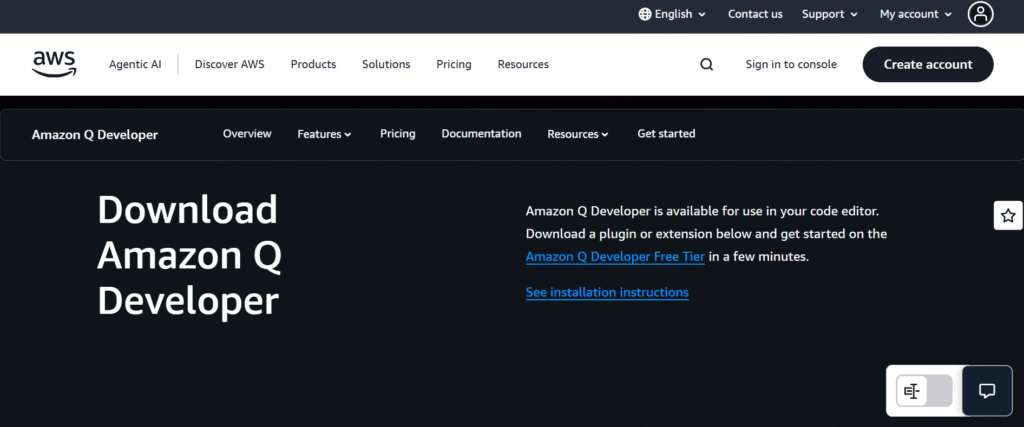
Code Transformation Agents: Q can modernize entire applications autonomously. I’ve watched it upgrade a legacy Java 8 codebase to Java 17, handling dependency updates, API changes, and performance optimizations across dozens of files.
Open Source Attribution: For legal compliance, Q tracks when its suggestions resemble existing open-source code, providing repository references and license information so you can make informed decisions.
Essential for any developer building on AWS. Whether you’re a cloud architect, DevOps engineer, oder full-stack developer deploying to AWS, Q Developer’s specialized knowledge is invaluable.
Q Developer excels at:
The security scanning caught several hardcoded API keys and SQL injection vulnerabilities that other tools missed, potentially saving thousands in security audits.
Bottom Line: Indispensable for AWS development, offering specialized cloud expertise that generic AI assistants simply cannot match.
The Verdict: Best for security-conscious enterprises where code privacy is non-negotiable
In a market dominated by cloud-connected AI, Tabnine has carved out a critical niche by prioritizing privacy without sacrificing intelligence. For regulated industries and security-conscious organizations, it’s often the only viable option.
Flexible Deployment Options: From secure SaaS to fully air-gapped on-premises deployment, Tabnine adapts to your security requirements. Your most sensitive code can remain completely within your network perimeter.
Custom Model Training: Train private AI models exclusively on your organization’s codebases. The AI learns your team’s coding patterns, architectural decisions, and domain-specific libraries, providing highly relevant suggestions that generic models cannot offer.
Zero Data Retention: Tabnine’s privacy promise is simple: your code is never stored on their servers or used to train public models. All processing is ephemeral, with data discarded immediately after generating suggestions.
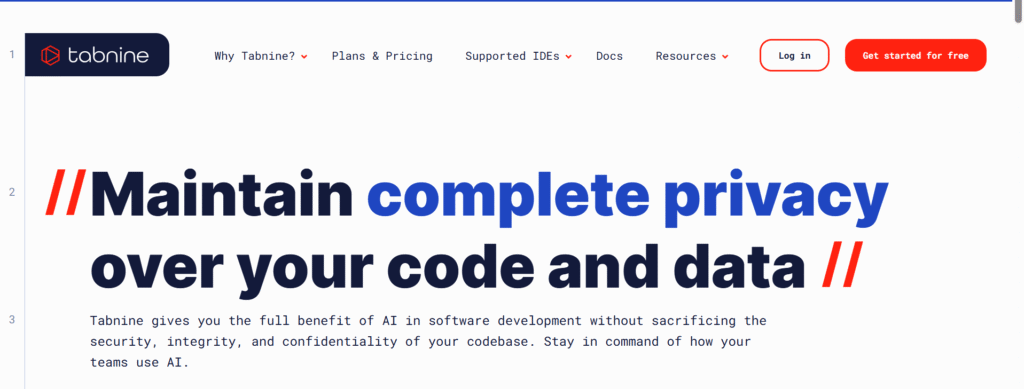
Permissive License Training: Public models are trained only on open-source code with permissive licenses, reducing intellectual property risks. Enterprise versions provide attribution for suggestions to prevent accidental license violations.
Perfect for enterprises in regulated industries (finance, healthcare, government) where code privacy and data sovereignty are paramount. If your security policy prohibits sending proprietary code to third-party clouds, Tabnine may be your only option.
Tabnine excels at:
Custom models trained on internal codebases produce remarkably relevant suggestions, often outperforming generic models for domain-specific tasks.
Bottom Line: The gold standard for privacy-conscious AI assistance, offering powerful personalization for organizations that cannot compromise on code security.
Getting an AI coding tool is just the beginning. Using it effectively requires developing new skills and workflows. Here’s what I’ve learned from hundreds of hours working with these platforms:
Treat your AI like a talented junior developer—eager and fast, but needing clear direction.
Ineffective: “Write a function to validate user input.” Effective: “Write a TypeScript function using Zod that validates a user registration object with email (valid format), password (8+ chars, 1 number, 1 special char), and age (18+). Return validated object or throw descriptive errors.”
AI-generated code can contain subtle bugs, security vulnerabilities, or inefficient patterns. Research shows developers using AI sometimes write less secure code due to over-reliance on suggestions. You’re still the engineer of record—never commit code you can’t explain and defend.
Let AI handle the repetitive work: generating boilerplate, writing tests, creating documentation, and scaffolding projects. This frees your mental energy for high-value tasks: system design, complex business logic, and strategic technical decisions.
AI output quality correlates directly with context quality. Learn your tool’s context management features—Cursor’s @ mentions, JetBrains’ explicit context selection, or simply organizing your workspace thoughtfully. Better context yields dramatically better results.
Don’t expect perfection from a single prompt. Treat AI like a collaborative partner. Generate a first draft, then refine through conversation: “Good start, but refactor this into smaller functions,” “Add comprehensive error handling,” “What are the performance implications here?”
Will AI replace software developers?
No, but it’s fundamentally changing our role. AI automates mechanical coding tasks, elevating developers to focus on architecture, creative problem-solving, and strategic thinking. The risk isn’t being replaced by AI—it’s being out-competed by developers who’ve mastered using AI effectively.
What about code privacy and security?
This varies significantly by tool:
Which tool is best for Python/JavaScript development?
All five tools excel with major languages. Your choice depends more on workflow preferences:
For comprehensive guidance on choosing the right AI development tools and mastering modern programming workflows, platforms like mentorhelp.online provide expert insights from experienced developers who can help accelerate your journey.
AI coding assistants in 2025 aren’t experimental novelties—they’re essential professional tools. The question isn’t whether to adopt AI assistance, but which platform aligns with your specific needs and how to integrate it most effectively into your workflow.
These tools are fundamentally changing how we approach software development, automating tedious tasks and enabling us to operate at higher levels of abstraction. The fear of being replaced by AI misses the point. The real opportunity is leveraging AI to build more ambitious software faster than ever before.